Recent Development of Self-Powered Tactile Sensors Based on Ionic Hydrogels
- PMID: 36975706
- PMCID: PMC10048595
- DOI: 10.3390/gels9030257
Recent Development of Self-Powered Tactile Sensors Based on Ionic Hydrogels
Abstract
Hydrogels are three-dimensional polymer networks with excellent flexibility. In recent years, ionic hydrogels have attracted extensive attention in the development of tactile sensors owing to their unique properties, such as ionic conductivity and mechanical properties. These features enable ionic hydrogel-based tactile sensors with exceptional performance in detecting human body movement and identifying external stimuli. Currently, there is a pressing demand for the development of self-powered tactile sensors that integrate ionic conductors and portable power sources into a single device for practical applications. In this paper, we introduce the basic properties of ionic hydrogels and highlight their application in self-powered sensors working in triboelectric, piezoionic, ionic diode, battery, and thermoelectric modes. We also summarize the current difficulty and prospect the future development of ionic hydrogel self-powered sensors.
Keywords: ionic hydrogels; piezoelectric; self-powered sensors; tactile sensors.
Conflict of interest statement
The authors declare no conflict of interest.
Figures





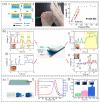


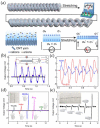


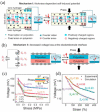

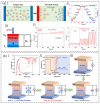
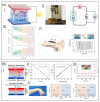
References
-
- Harito C., Utari L., Putra B.R., Yuliarto B., Purwanto S., Zaidi S.Z.J., Bavykin D.V., Marken F., Walsh F.C. Review—The Development of Wearable Polymer-Based Sensors: Perspectives. J. Electrochem. Soc. 2020;167:037566. doi: 10.1149/1945-7111/ab697c. - DOI
-
- Peng H., Xin Y., Xu J., Liu H., Zhang J. Ultra-stretchable hydrogels with reactive liquid metals as asymmetric force-sensors. Mater. Horiz. 2019;6:618–625. doi: 10.1039/C8MH01561A. - DOI
Publication types
Grants and funding
LinkOut - more resources
Full Text Sources

